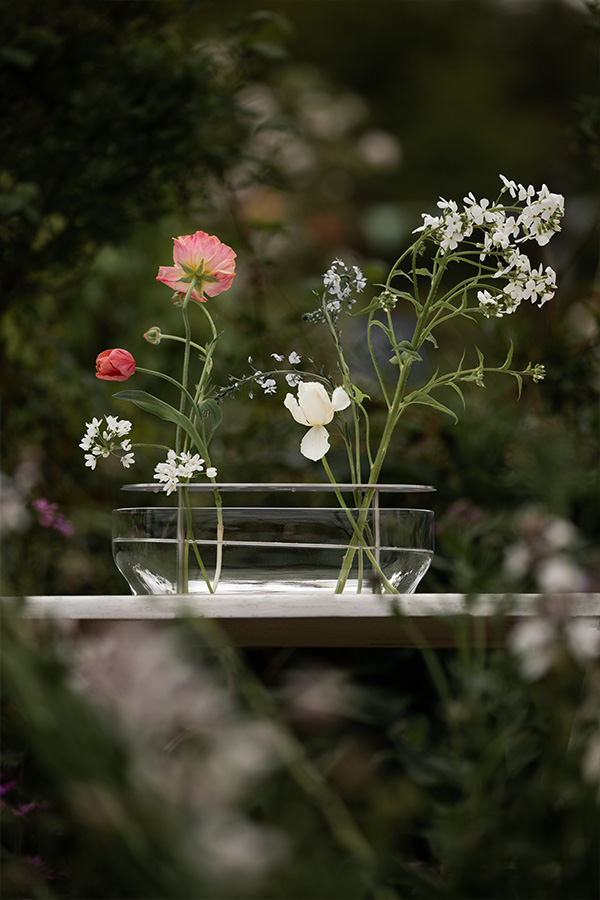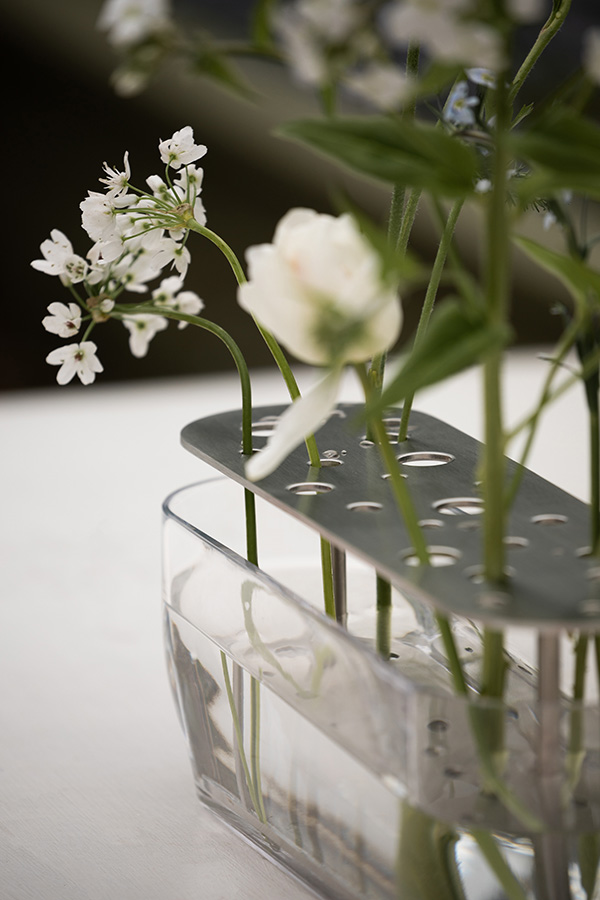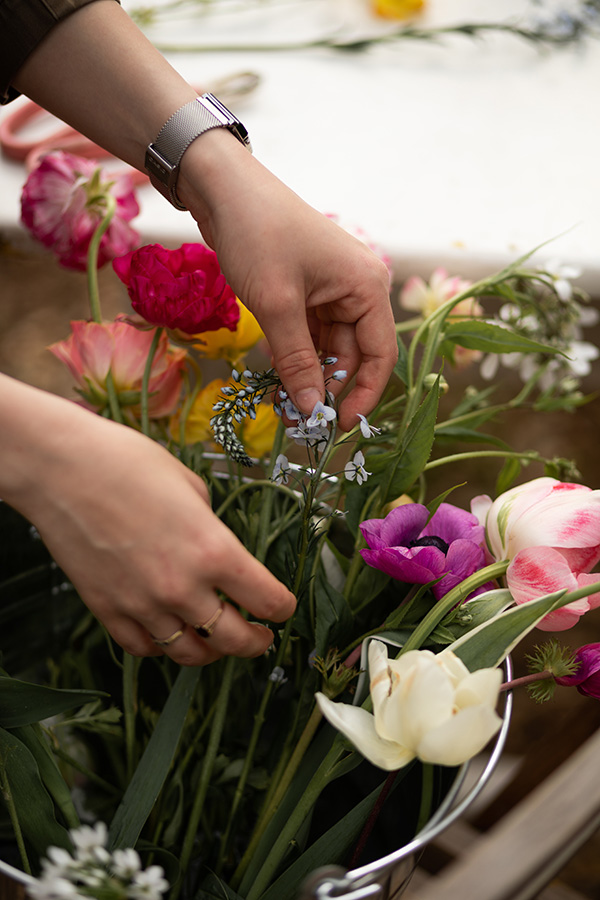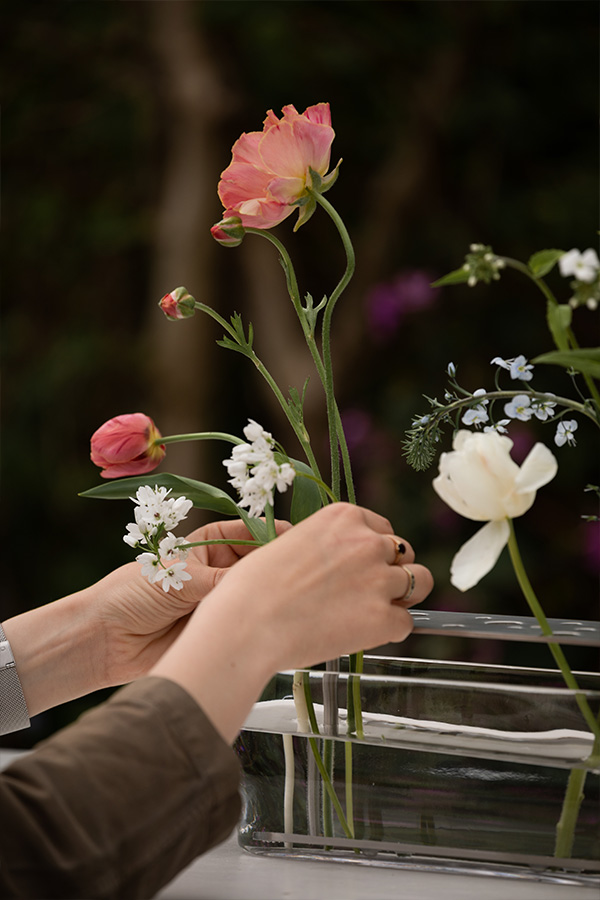The art of ikebana
What better way to celebrate the season than with a beautiful selection of blooms? As summer approaches, we take a closer look at ikebana, the ancient Japanese art of flower arranging.
It’s the season of longer days and warmer temperatures, a time where the natural world has woken from its winter slumber. Across the country, our gardens, parks, and fields are treating us to lush greenery and a riot of joyful, colourful flowers.
A wonderful way to celebrate the beauty of nature in summertime, let us introduce you to the centuries-old Japanese art of ikebana…
What is ikebana?
Ikebana is a practice that is just as spiritual as it is technical. It is often translated as ‘Japanese floral art’ or ‘flower arranging’; however, the word ikebana literally means the act of giving another life to flowers, allowing them to perform and reveal their innate beauty and spirit.
To practice the art of ikebana you require living flowers and as such, every arrangement also requires the ‘killing’ of live flowers. In turn, ikebana aims to celebrate the beauty of these stems and the beauty of a fleeting moment. The true purpose of ikebana is to give ever-lasting artistic life to otherwise transient objects.
The origins of ikebana dates to the 7th century in Japan when monks would collect flowers from the garden and offer them to Buddha. Hundreds of years later, ikebana was eventually formalised by emperors and aristocrats. Today, there are numerous schools of ikebana, all with varying customs, with the practice often being passed down through same family, generation to generation.
The Fritz Hansen Ikebana collection
True to the spirit of ikebana, the Fritz Hansen Ikebana vases have been designed to honour every stem placed within them, from head to crown. Whilst traditional ikebana involves using a spiky device called a kenzan to hold flowers – the Ikebana vase makes use of a punched metal frame to achieve the same result. This frame features holes of varying sizes, allowing you to creatively place individual stems to create your own floral masterpiece.
Available in three sizes, and either a brass or stainless-steel finish, the Ikebana vases are a firm favourite of ours here at Nest.
From Tokyo to Sheffield
To find out more about the art of ikebana, we recently took the beautiful Fritz Hansen Ikebana Vase down to Bloom Sheffield’s lovely city garden – for a conversation with one of their florists Erin, who is trained in the ancient art of ikebana. She has been learning ikebana from Junko Popham, an ikebana tutor born in Tokyo and currently based in Manchester.
“With the style of ikebana that I practice, we suggest putting the stems in three different placements, and the three different placements represent three different things. The tallest placement (shin) represents the sky or heaven. The second placement, which is shorter and closer to the ground (soe) represents mankind. And then the third placement, which is placed at the bottom (tome) represents the earth. Think about what those three different things mean to you and interpret it in whatever way makes sense to you.”
“Before popping the stems into the vase, we like to chop them on a slight angle. When you cut them on a slight angle, it means the stem can absorb water properly, so they will last longer. When we’re chopping the stems at an angle, we will also do that submerged in water. This is a technique that protects the flower, in both a spiritual and practical way.”
Being based in Sheffield, Erin made use of native British blooms in her arrangements for us, reflecting the natural environment which surrounds the Bloom Sheffield garden. There aren’t any rules about which plants must be used in ikebana, the practice is about using familiar flowers to create an arrangement which expresses the natural beauty of the world around you. This means that ikebana can be very different, depending on where in the world its being practised. It’s all about finding the beauty of nature, through your own eyes.
More about Bloom Sheffield
Bloom Sheffield is a community flower garden for women and girls in Heeley, Sheffield. In their beautiful garden, they provide a safe space for women to learn and share skills, meet new people, and be involved in positive, nature-based activity to help improve mental health. If you’d like to get involved, Bloom Sheffield run weekly Open Days and Gardening for Mental Health groups to reduce social isolation and to help women feel good - both mentally and physically. Learn more on the Bloom Sheffield website.
Inspired to create your own floral arrangement? Discover our full collection of vases and planters online at nest.co.uk. If you need a little help selecting a vase that’s right for you, or if you have any questions on any of the designs featured, please feel free to contact our team via email, over the phone on 0114 243 3000 or on Live Chat.
Have you created an ikebana arrangement at home? Share your styling with us over Instagram, by tagging us @nest_co_uk.
Images by Max Hawley.










